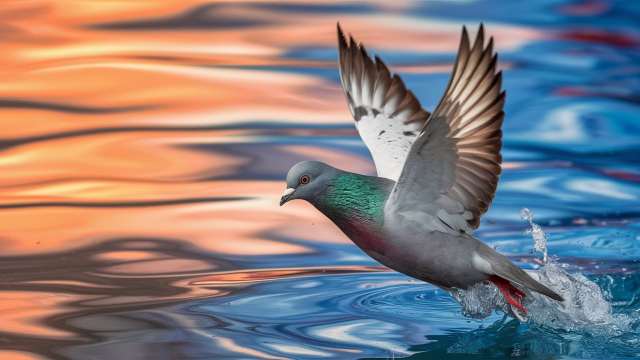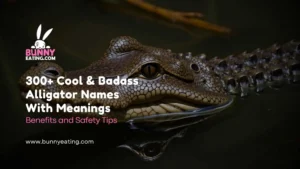Diving pigeons – these birds are recognized for their fascinating behaviour of diving into water. They are among the most competent scavengers and revel in the skilful manipulation of their surroundings. Their choice of habitat is equally interesting because they are normally located in certain areas that correspond to what they require. Where Does The Diving Pigeon Live?
Think of a pigeon soaring with grace, much like an accomplished sportsman. Other doves do not exhibit this odd technique. It’s not easy then to speculate on their localities. Understanding the places they dwell in explains their mode of living and survival tactics.
Mostly, diving pigeons are found in coastal areas and regions near big water bodies. These birds prefer habitats with access to both water and open spaces. This environment assists them in finding food and staying safe from predators. By knowing these birds living conditions, we can develop a sense of their incredible adaptation skills.
Habitat of the Common Loon: Nature’s Diving Expert
Common Loons are perfectly adapted to life on the water. They’re most at home in clear, deep freshwater lakes and ponds across North America. These birds need pristine waters to thrive, as they rely on their excellent eyesight to spot fish swimming below the surface. During the breeding season, you’ll find loons on inland lakes, where they build their nests close to the water’s edge. In winter, many loons head to coastal areas, trading their summer lakes for the open ocean.
The ideal loon habitat isn’t just any old body of water. These birds prefer lakes that are at least 60 acres in size and have plenty of small bays and islands. They need deep water for diving and fishing, but also shallow areas for nesting. Clear water is crucial, as murky conditions make it hard for loons to spot their prey. Interestingly, loons are so well-adapted to aquatic life that they’re practically helpless on land. Their legs are positioned far back on their bodies – great for swimming and diving, but terrible for walking!
Geographical Distribution: From Coast to Coast
Common Loons are widely distributed across North America, with their breeding range stretching from Alaska and northern Canada down to the northern United States. States like Minnesota, Wisconsin, and Maine are particularly well-known for their loon populations. Minnesota has adopted the Common Loon as its state bird! During the breeding season, you’ll find loons across a vast swath of the continent, from the Atlantic to the Pacific.
When winter rolls around, loons embark on an impressive migration. Most head to the coasts, with birds from the eastern part of the range typically flying to the Atlantic seaboard, while those from further west make for the Pacific coast. Some loons even winter on the Gulf of Mexico. This seasonal movement is crucial for their survival, as their breeding lakes often freeze over in winter. The coastal waters provide a year-round supply of fish, ensuring the loons can keep their diving skills sharp even in the coldest months.

Preferred Environments: The Loon’s Ideal Home
Common Loons are picky about where they set up shop. They thrive in environments that offer a perfect balance of food, safety, and nesting sites. Large, clear lakes with plenty of fish are top of their list. These lakes need to be big enough to give loons a long “runway” for takeoff – these heavy birds need up to a quarter-mile of open water to get airborne! They also prefer lakes with irregularly shaped shorelines and small islands, which provide sheltered spots for nesting.
The ecosystem of a loon’s home lake is crucial. Healthy populations of fish like perch, suckers, and minnows are essential, as these form the bulk of a lion’s diet. But it’s not just about the fish – the entire lake ecosystem needs to be in balance. This includes everything from the tiny aquatic insects that young fish feed on to the plants that provide cover for nesting loons. Water quality is also vital. Loons are sensitive to pollution and can serve as indicators of a lake’s overall health. If you see loons on a lake year after year, it’s a good sign that the ecosystem is in good shape.
Adaptations to Their Habitat: Built for Aquatic Life
The Common Loon is a master of adaptation, with a body perfectly suited to its aquatic living conditions. Let’s start with their legs. Unlike most birds, loons have their legs positioned at the very back of their body. This might make them awkward on land, but it turns them into underwater torpedoes. Their powerful leg muscles drive their webbed feet, propelling them through the water with incredible speed and agility.
However, adaptations don’t end there. The loons have solid bones as opposed to the hollow bones present in most birds. This additional weight assists them dive deep – they can go up to 200 feet under the surface looking for fish! Their beaks are also designed just for fishing. Sharp and oily they’re excellent at grasping anything slimy that passes through their mouths.
Even their eyes are made such that they see better when within an aquatic environment; this is due to special muscles that modify the lens’ shape, thus enabling a clear view both above and beneath the water’s surface. No wonder these birds are known for being among nature’s best divers!
Seasonal Migration Patterns: The Loon’s Annual Journey
Common Loons are migratory birds, with their habitat changes closely tied to the changing seasons. In spring, as the ice melts on northern lakes, loons begin their journey back to their breeding grounds. This typically happens in April or May, depending on the latitude. They’ll spend the summer on freshwater lakes, raising their young and feasting on the abundant fish.
As autumn approaches and temperatures drop, loons prepare for their southward migration. This usually occurs in September or October. The journey can be perilous, with some loons travelling over 1,500 miles to reach their wintering grounds. Interestingly, loons moult their flight feathers during migration, which can leave them flightless for several weeks.
They time this moult carefully, ensuring they’re on large bodies of water where they can dive to safety if threatened. The change in habitat from freshwater to saltwater also requires physiological changes, as loons need to adapt to drinking saltwater and dealing with different prey species.
Threats to Their Habitat: Challenges in a Changing World
Despite their adaptability, Common Loons face numerous challenges and threats to their natural habitats. One of the biggest issues is water pollution. Acid rain, caused by industrial emissions, can lower the pH of lakes, killing fish and other aquatic life that loons depend on. Mercury pollution is another serious concern. Loons can accumulate high levels of mercury from eating contaminated fish, which can affect their behaviour and reproductive success.
Shoreline development is another threat. As people construct houses and piers on the edges of lakes, loons are left without key breeding grounds. Increased boat traffic can interfere with nesting loons and cause wakes that may flood nests. Climate change is also affecting these birds by changing the timing of ice melting and determining the presence or absence of food for them at different times of the year.
In some regions, increased heat allows competitors to spread into historical loon range areas. These combined challenges make it ever more difficult for common birds like this one to discover appropriate places to live and rear their progeny.

Conservation Efforts: Protecting North America’s Diving Wonder
Recognizing the importance of Common Loons, many organizations and individuals are working hard on protection and preservation efforts. One key measure is the creation of loon-friendly lake management practices. This includes establishing no-wake zones near loon nesting sites, using lead-free fishing tackle to prevent poisoning, and educating boaters about how to avoid disturbing loons.
Water quality improvement initiatives are also crucial. This can involve everything from upgrading sewage treatment facilities to implementing better agricultural practices to reduce runoff. Many states have specific loon conservation programs. For example, New Hampshire’s Loon Preservation Committee has been working since 1975 to protect loons through monitoring, research, management, and public education. Citizen science projects, where volunteers help count and monitor loons, play a big role in conservation efforts. These programs not only provide valuable data but also help raise public awareness about the importance of protecting loon habitats.
Observing Common Loons in the Wild: A Birdwatcher’s Guide
For birdwatchers and nature enthusiasts, few experiences can match the thrill of spotting a Common Loon in the wild. The best time to observe loons is during the breeding season, from late spring through summer. Early morning or late evening are ideal, as this is when loons are most active and vocal. Look for them on large, clear lakes in states like Minnesota, Wisconsin, Maine, and New Hampshire. National parks like Acadia in Maine and Voyageurs in Minnesota are excellent spots for loon watching.
When observing loons, it’s important to practice responsible wildlife viewing. Use binoculars or a spotting scope to get a close-up view without disturbing the birds. If you’re in a boat, maintain a respectful distance and avoid approaching nesting sites. Listen for the loon’s distinctive calls – they have four main vocalizations, including the famous “tremolo” which sounds like a laugh. Watch for behaviours like the “penguin dance,” where loons stand upright in the water and rapidly beat their wings. Remember, patience is key when wildlife watching. Settle in, stay quiet, and let the loons come to you. You might be rewarded with an unforgettable encounter with one of North America’s most charismatic birds.

Conclusion
Understanding where the diving pigeon lives helps us appreciate this bird’s unique way of life. These birds thrive in coastal areas and near large bodies of water. Their habitats offer them plenty of food and a safe place to live. By being in these specific environments, diving pigeons can use their diving skills to hunt and avoid dangers.
Diving pigeons are located in these areas because of their knowledge of home. They, therefore, have adapted to the conditions in which they are found. Such adaptation is essential for their survival. Through habitat selection, the pigeons’ needs and behaviours become obvious, thus enabling an understanding of how life goes on with them.
FAQs
Where do pigeon guillemots live?
Pigeon guillemots live on rocky coastal cliffs and islands in the North Pacific. They often nest in crevices or burrows near the sea.
Where does the laughing dove live?
The laughing dove lives in open and semi-arid regions of Africa and the Middle East. It prefers areas with scattered trees and shrubs.
What habitat do pigeons live in?
Pigeons are highly adaptable and can live in various habitats, including urban areas, forests, and open countryside. They often make their homes in nooks and crannies of buildings or trees.
Where does the tooth-billed pigeon live?
The tooth-billed pigeon lives in the dense forests of New Caledonia. It prefers the upper canopy and areas with plenty of fruit and foliage.











